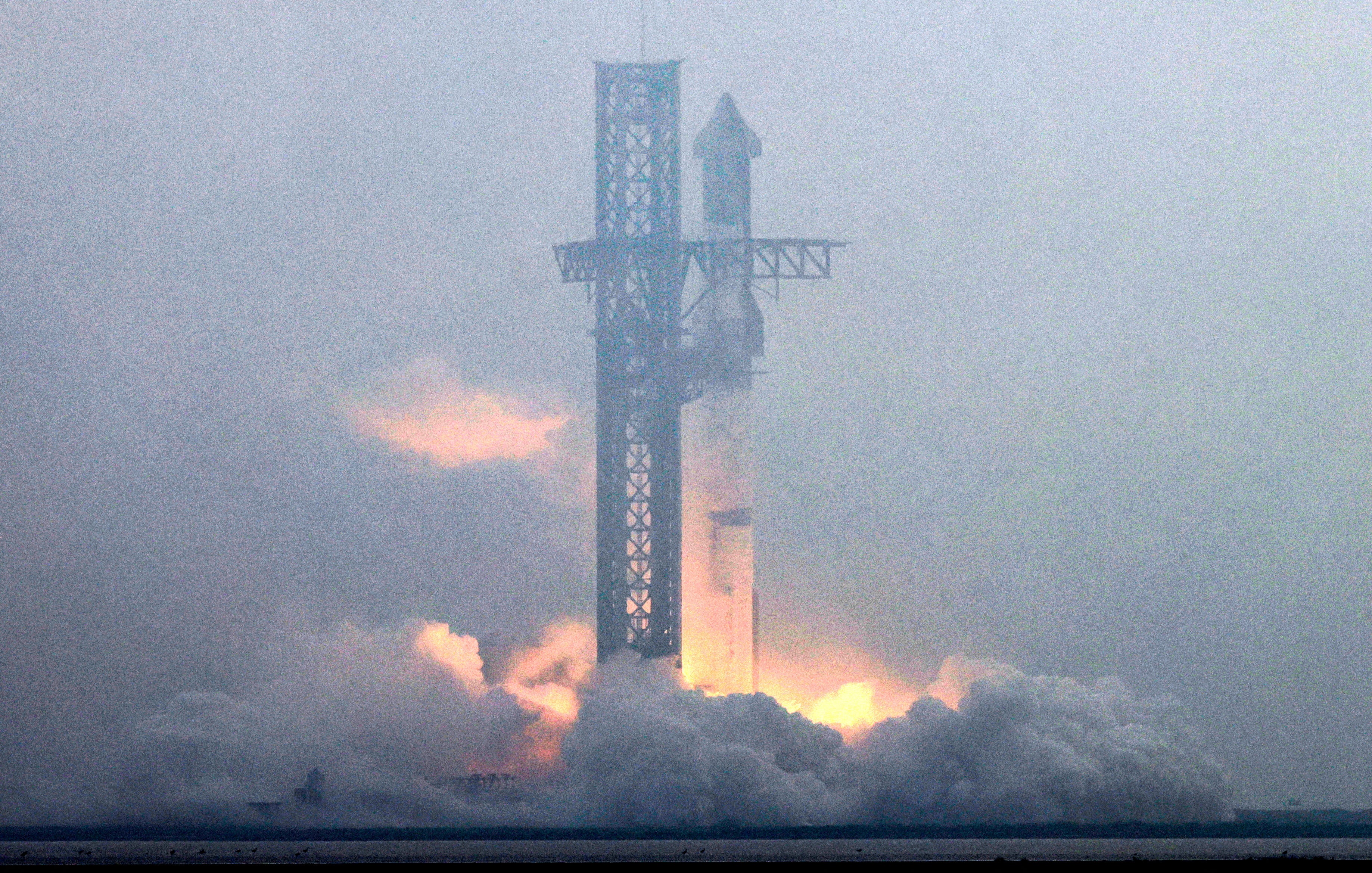Blazing success and dramatic destruction: How SpaceX’s Starship succeeded and failed in pioneering test launch
The Starship spacecraft is considered ‘lost’, broken apart by the stress of coming back to Earth. But SpaceX considers its spectacular test flight a win

Starship – the most powerful rocket ever made, the heaviest thing put into orbit, and perhaps the spacecraft that will one day carry humans to Mars – was falling back down to Earth. It was aglow with the hot plasma that is generated by plunging through the atmosphere at speed.
And then it disappeared. SpaceX’s video connection, which until then had been providing pristine views of the mission, was cut.
“The ship has been lost. So no splashdown today,” said SpaceX’s Dan Huot shortly after. “But again, it’s incredible to see how much further we got this time around.”
“Lost” is something of a euphemism: the spacecraft most likely broke apart because of the stress of coming back down to Earth, destroyed by the heat and friction of the atmosphere. But SpaceX made clear that it considers that loss a major win.
SpaceX is no stranger to its successes ending in what appear to be dramatic failures. The last two test flights of the Starship ended in much the same way – and much more quickly.
In April 2023, the first orbital test flight took off and then blew itself up four minutes when it went into an uncontrolled spin. SpaceX had only wanted it to get off the launch pad, and so declared that explosion a success.
The second test came in November: it went on twice as long, but at eight minutes in the automated systems once again detected an issue and the spacecraft destroyed itself. Again, SpaceX said it was a success – even if it had ended in a spectacular explosion.
For this third test, SpaceX had worked hard to try and temper expectations. If all went well, then the rocket would take off and then detach from its booster – the booster would come back and land safely on the ground, and the main Starship would go into orbit before falling into the Indian Ocean around an hour later.
Most of that did happen. But things started to go wrong as Starship fell back down to Earth: it was supposed to burn its engines a little, which didn’t happen, and then it lost touch with the ground on its way back down to Earth.
SpaceX was nonetheless keen to stress that the test had been a success, and that much had been learnt. Nasa chief Bill Nelson congratulated SpaceX on what he called “a successful test flight”, and its president Gwynne Shotwell wrote in an X post that the test marked an “incredible day.”
Hailing a series of explosions and the loss of spacecraft might appear odd. But it is in keeping with SpaceX’s approach, which is far more tolerant of risk than other manufacturers and has seen it happily do much of its development in public, in live tests.
Chad Anderson, a managing partner of SpaceX investor Space Capital, was one of many who said that – despite the loss – the mission was a success, and one that proved the spacecraft is ready for commercial missions. “This is a hugely successful test flight for SpaceX,” he told The Independent.
“Starship achieved nearly all of its goals on what was an extremely ambitious test flight. An important objective with this test was for Starship to achieve orbital velocity. Another key test was to successfully open the payload doors. Those two factors were needed in order for SpaceX to move ahead with its plans to launch the first Starlink satellites using Starship.
“At this point, I think SpaceX has demonstrated that Starship is now ready to begin its payload delivery missions, which is an incredible breakthrough for the company - as well as for the entire space economy.”
Still, the Federal Aviation Authority has said that it will investigate the mishap. SpaceX is required to investigate and provide information on each failure to the regulators, so that they will give permission for it to fly again.
That will be important: SpaceX intends to conduct at least six more of the tests this year. And Elon Musk intends that the spacecraft will carry humans to the Moon and Mars – but not before it has flown hundreds of times without people on board.
Borrowing from the Silicon Valley software approach of iterative development and moving fast and breaking things might be fine when carrying cargo, such as SpaceX’s Starlink satellites. But the Starship is due to play a central role in the Artemis programme that will take humans back to the Moon – where explosions will, clearly, not be tolerated.
As with the euphemistic announcement that the Starship was “lost”, SpaceX usually avoids saying that its spacecraft blew up. The company is fond of the phrase “rapid unscheduled disassembly”, or RUD, a slightly sarcastic phrase that has gained regular use given the company’s history of explosions.
When the company was working on the Falcon 9 rocket – a now thoroughly reliable vehicle that takes crew and cargo to orbit regularly and safely – it went through a long period of attempting to land them vertically, so that they could be reused.
Now, in part because of the lessons learned in those explosions, SpaceX is able to land the boosters reliably. In all, 41 boosters have been used twice over – and one of them, known as B1058, has done 19 missions.
Join our commenting forum
Join thought-provoking conversations, follow other Independent readers and see their replies
Comments
Bookmark popover
Removed from bookmarks